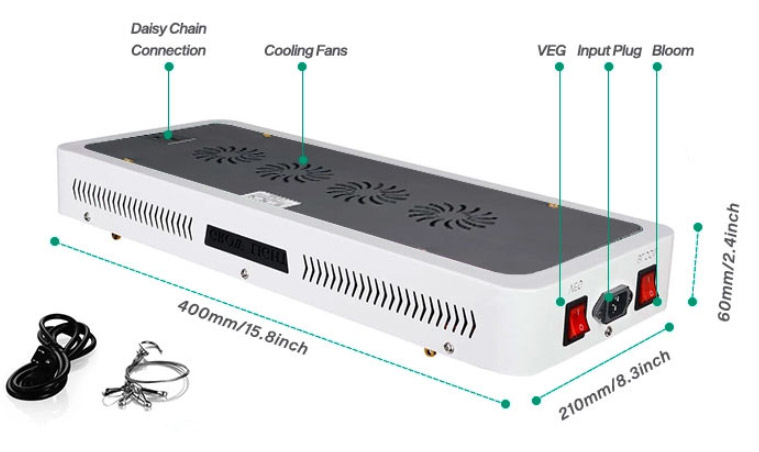The plant growth light is a type of man-made light source and generally an electric light source. It is aimed at sending electromagnetic waves suitable for photosynthesis to stimulate plants' growth. The light observes the principle of semiconductor lighting and is especially used as a high-precision technology for cultivating flowers and vegetables. Plant grow lights are applied to indoor gardening, plant growing, and food production, including indoor hydroponics and aquatic plants. Although most plant growth lights are used in the industry, they can also be applied at home. Generally speaking, plants and flowers kept indoors always wither due to the lack of sunlight. Thus LED lights that send a light spectrum needed by plants can be used to stimulate plants' growth, prolong the fluorescence phase, and raise flowers' quality. Besides, such an efficient light source system can be applied to agricultural production in greenhouses and other facilities. For one thing, it will solve the drawback that greenhouse vegetables such as tomatoes and cucumbers decline in quality due to inadequate sunshine. For another, it will advance the maturity of greenhouse fruits and vegetables to days around the Spring Festival and achieve out-of-season cultivation. For instance, growth lights can be applied to lengthening the duration of light when daily sunshine fails to meet plants' demands for growth. If plants receive inadequate light, their growth will be slowed down.
The operating principle of growth lights is as follows: The light provides a light spectrum similar to that of sunshine or is suitable for cultivating plants. The light sends different colors and changes its lumen output (intensity) to simulate the varied temperatures and spectrum output of the outdoor condition. As the category of cultivated plants, cultivation stage (such as germination/vegetative stage or florescence stage/fruiting period) and the light cycles needed by plants vary, the spectrum stage, lighting efficiency, and color temperatures should be adjusted flexibly.

According to the Inverse Square Law, the intensity of light traveling from the point source to the surface (the lamp in this case) is inversely proportional to the distance between them (If the object is located at the place two times farther, it will only receive one-fourth of light). Given this severe obstacle to indoor planters, many technologies have been applied to using light efficiently. Thus reflectors are frequently applied to lighting to maximize the lighting effect. Also, lights should be moved as close to the ground as possible to ensure that all plants grow in the same lighting environment and that light falls on all plants rather than the surrounding area.
For instance, there are incandescent lamps, fluorescent lamps, HID, and LED. HID and fluorescent lamps are most widely used in professional scenarios, while HPS/SON and (MH) HID lamps are more commonly used by indoor flower and vegetable planters. Due to their high efficiency and economic values, fluorescent lamps and LED have replaced lamps with (MH) HIDs.
(MH) HIDs are frequently applied in the vegetative stage of plant growth because they emit a larger amount of blue and ultraviolet radiation. With the introduction of ceramic metal halide lighting and full-spectrum metal halide lighting, HIDs are increasingly used as the only light source for vegetative reproduction and growth. It should be noted that a blue spectrum may trigger a larger nutritional response from plants.
High-pressure sodium lamps also provide a single light source throughout the vegetative and reproductive stages. Also, these lamps are applied to correcting full-spectrum lighting in the reproduction stage. Given that an infrared spectrum may trigger a better flowering effect on plants, using high-pressure sodium lamps in the vegetative stage will accelerate plants' growth.

